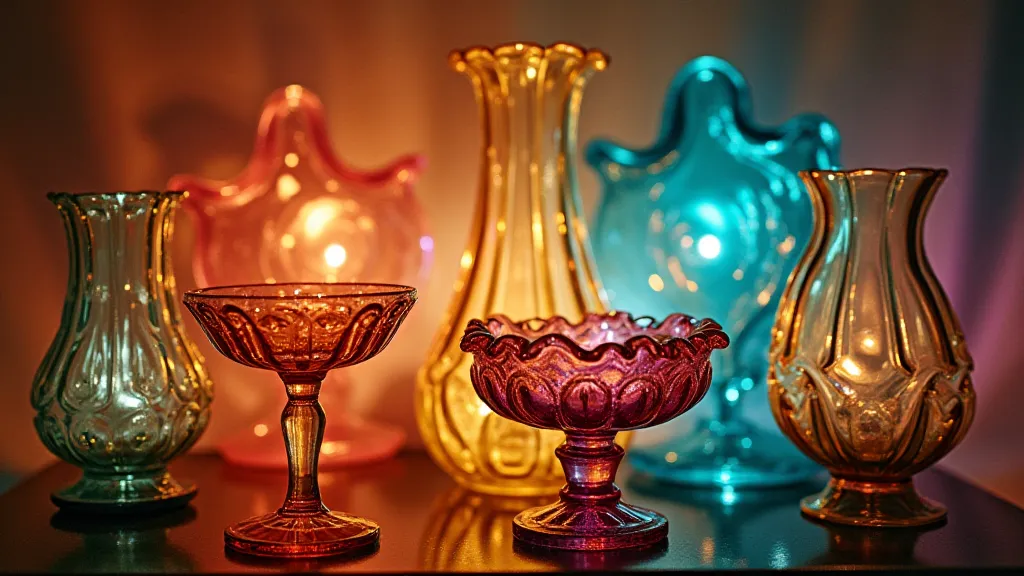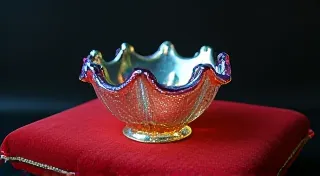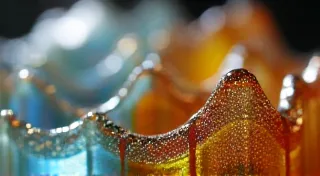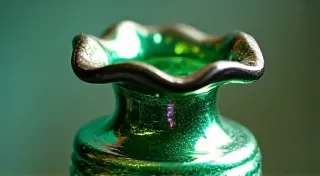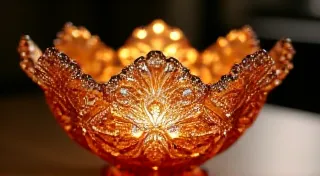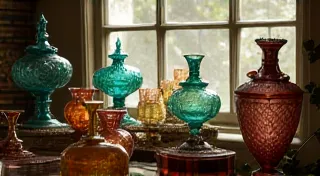Caring for Your Carnival Glass Collection: Preservation Tips
Your carnival glass collection represents more than just beautiful pieces of art; it's an investment in history and craftsmanship. Proper care and preservation are essential to maintaining its beauty and value for generations to come. This guide provides practical tips on cleaning, storage, and handling your collection, ensuring these shimmering treasures remain vibrant.
Understanding Carnival Glass & Its Vulnerabilities
Carnival glass, known for its iridescent sheen, is typically made from a soda-lime glass base with a surface coating of metallic oxides. This coating is what creates the mesmerizing rainbow effects, but it’s also what makes the glass somewhat delicate. Improper handling and cleaning can damage this delicate surface, dulling the iridescence and potentially chipping the glass. If you’re new to collecting, a beginner's guide to carnival glass can provide a foundational understanding of its history and characteristics.
Cleaning Your Carnival Glass: A Gentle Approach
Dust is the enemy of any collectible, and carnival glass is no exception. Regular dusting helps prevent grime buildup that can gradually dull the iridescence. But cleaning goes beyond that:
Routine Dusting
Use a soft, clean cloth (microfiber is ideal) to gently wipe down your pieces. Avoid abrasive materials like paper towels, which can scratch the surface. A camel-hair brush can be helpful for reaching intricate details.
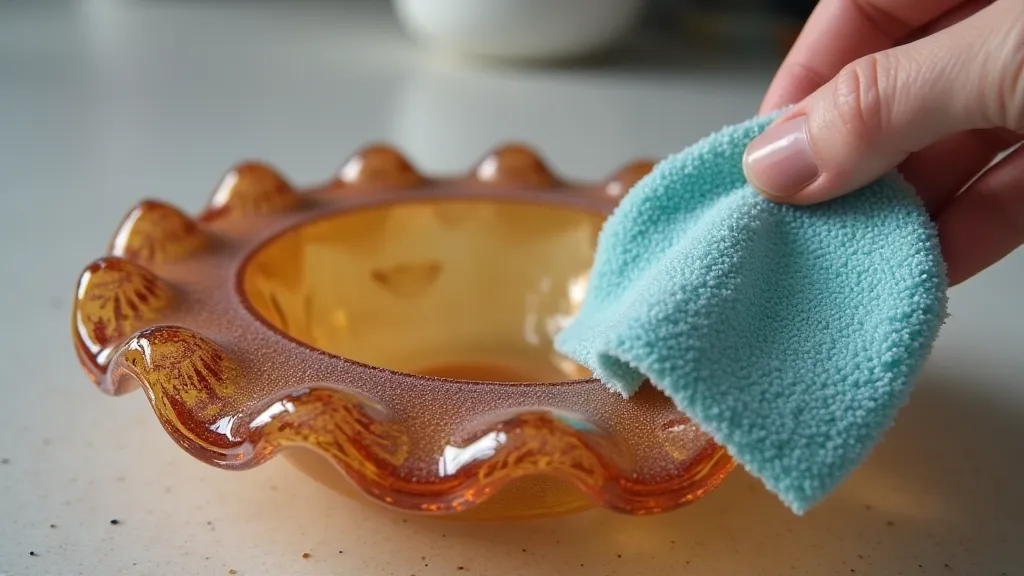
Occasional Washing
For more thorough cleaning, use lukewarm water and a pH-neutral dish soap. Avoid harsh chemicals, abrasive cleaners, and anything acidic (like vinegar or lemon juice). Rinse thoroughly with lukewarm water and dry immediately with a soft, clean cloth. Air drying can leave water spots that are difficult to remove.
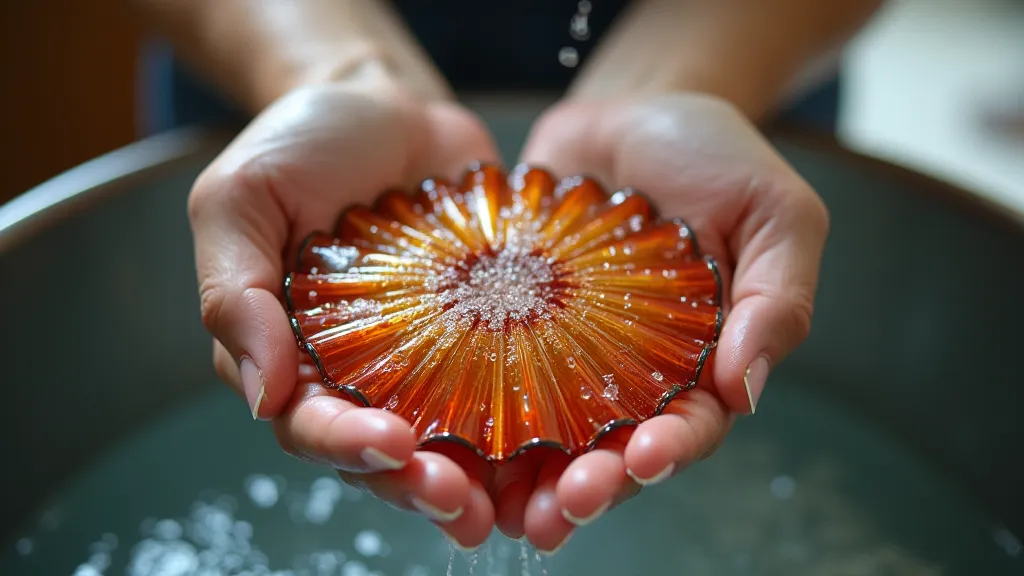
Dealing with Stubborn Dirt
For stubborn dirt or residue, try soaking the piece in lukewarm water with a mild detergent for a short period. Avoid prolonged soaking, as this can potentially damage the surface. Identifying different types of carnival glass can be challenging, and a deeper understanding of manufacturing techniques and historical context can significantly aid in this process. For collectors just starting out, the process of building a carnival glass collection can seem daunting, but starting with a solid foundation of knowledge is key.
Storage: Creating a Safe Haven
Proper storage minimizes the risk of damage from handling, light exposure, and environmental factors. Here's how to protect your carnival glass:
Padding is Key
Wrap each piece individually in acid-free tissue paper or bubble wrap. Avoid newspaper, as the ink can transfer to the glass.
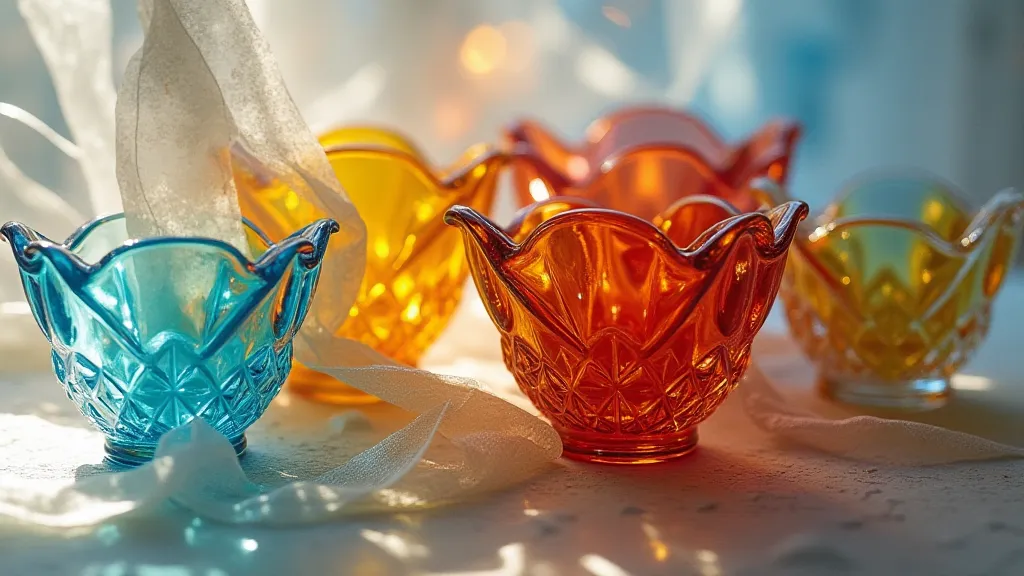
Protect from Light
Prolonged exposure to direct sunlight can fade colors and damage the iridescence. Store your collection away from direct sunlight and strong artificial light. Consider rotating your pieces occasionally to minimize the impact of light exposure on any single piece. The effects of light damage can be subtle initially, but over time, they can significantly detract from the beauty and value of your pieces. The type of iridescence—whether it’s peacock, oil spot, or another variation—can also influence how susceptible a piece is to light damage.
Temperature and Humidity
Avoid extreme temperature fluctuations and high humidity, which can cause cracking or condensation. A consistent, moderate environment is best. Maintaining proper storage conditions is critical. Many collectors become passionate about specific eras or styles. If you find yourself drawn to a particular aesthetic, taking the time to identifying Imperial carnival glass and learning to recognize its unique markings can greatly enhance your collecting journey.
Handling Your Carnival Glass with Care
Even the most careful cleaning and storage won't matter if you handle your pieces carelessly.
Gloves are Your Friend
Always wear clean, white cotton gloves when handling your carnival glass. This prevents oils and dirt from your fingers from transferring to the surface. Gloves are a simple precaution with a significant impact on preservation.
Support the Glass
Always support the piece securely when moving it. Avoid placing pressure on delicate areas. Be mindful of handles, rims, and any projecting elements.
Be Mindful of Surfaces
Place your carnival glass on soft, padded surfaces to prevent scratches. Consider using felt pads or custom-made display stands. The design of your display can also affect the perceived beauty of your collection. The challenges of accurately assessing the value of antique glassware can be significant, and a keen eye for detail is essential.
Beyond the Basics: Common Challenges and Considerations
While the above tips are essential, collectors often encounter specific challenges. One frequent issue is recognizing genuine carnival glass from reproductions or similar-looking glass. The iridescent effect, while beautiful, can sometimes be imitated, so careful examination and knowledge of manufacturing techniques are crucial. The subtle variations in color and iridescence can often be indicative of the manufacturer and the period in which the piece was made. Understanding the historical context of carnival glass, its origins in the early 20th century, and the various manufacturers involved can also aid in identification. The manufacturing processes themselves varied over time, impacting the appearance and value of pieces. Furthermore, even experts can sometimes be fooled by clever reproductions, highlighting the importance of continuous learning and comparison with authenticated examples. For collectors seeking to deepen their expertise, studying the nuances of different manufacturers' styles is highly recommended.
The Value of Preservation: More Than Just Aesthetics
Preserving your carnival glass collection isn’t just about maintaining its beauty; it’s about preserving a piece of history. Carnival glass reflects a specific era of American manufacturing, design, and popular culture. These pieces were often relatively inexpensive novelties, enjoyed by a wide audience, and represent a uniquely accessible form of decorative art. By taking the time to care for your collection, you are contributing to the preservation of this heritage for future generations. You’re also likely to protect the investment represented by your pieces, as well-preserved items command higher values in the collector’s market. Knowing how to properly assess a piece, and understand its provenance, becomes crucial in ensuring its long-term value.
Conclusion: A Legacy of Beauty
Caring for your carnival glass collection requires attention to detail and a gentle touch. By following these preservation tips, you can ensure your shimmering treasures remain a source of beauty and a tangible link to a fascinating era for years to come. Remember, a little care goes a long way in preserving the legacy of these captivating pieces.
